
Plate, probably Staffordshire (manufactured) and Liverpool (printed), England, ca. 1778. Creamware. D. 9 3/4“. (Courtesy, Reeves Museum of Ceramics, Washington and Lee University; photo, Robert Hunter.)
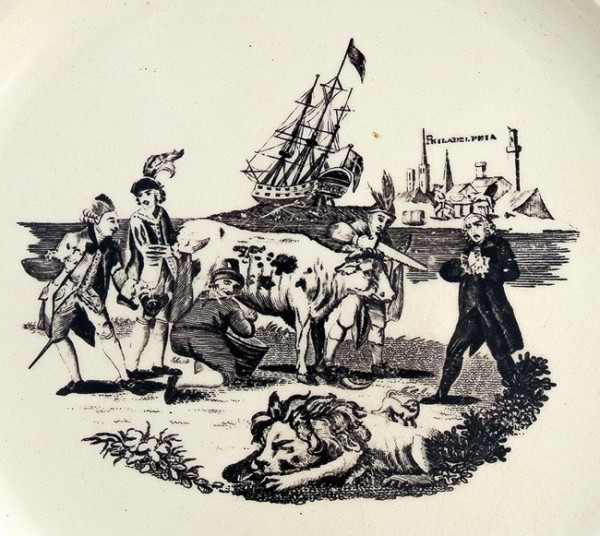
Detail of the plate illustrated in fig. 1.

A Picturesque View of the State of the Nation for February 1778, illustrated in Westminster Magazine 6 (March 1, 1778), p. 66. Engraving. 4 x 6 13/16”. (Courtesy, Colonial Williamsburg.)

Jug, probably Staffordshire (manufactured) and Liverpool (printed), England, ca. 1778. Creamware. H. 6 1/2“. (Courtesy, Winterthur Museum; photo, Laszlo Bodo.)
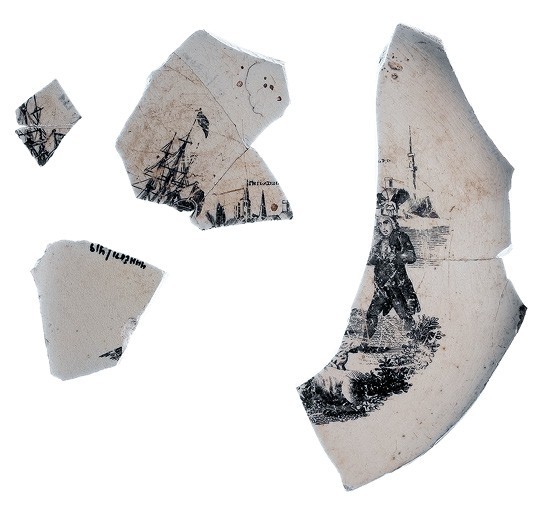
Fragments of two plates, probably Staffordshire (manufactured) and Liverpool (printed), England, ca. 1778. Creamware. H. of largest fragment 6". (Courtesy, Virginia Department of Historic Resources; photo, Robert Hunter.) These fragments were recovered from Lot #203, Rocketts Landing, Richmond, Virginia.

Aerial view of the excavation of Lot #203, Rocketts Landing, Virginia, ca. 1992. (Photo, courtesy of Dan Mouer and Jolene Smith.)
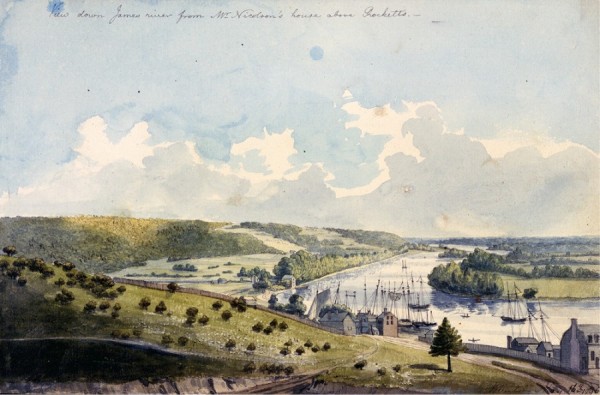
Benjamin Latrobe, “View down James River from Mr. Nicolson’s house above Rockett’s,” May 16, 1796. Watercolor on paper. 10 1/2 x 7". (Courtesy, Maryland Center for History and Culture.) This view was captured from the home of a “Mr. Nicholson” as Latrobe looked out at the winding James River and the growing trading village and port known as Rockett’s Landing, or simply “Rocketts,” in Richmond, Virginia.

Fragment of a vessel, probably Staffordshire (manufactured) and Liverpool (printed), England, ca. 1778. Creamware. H. 2 1/2“. (Courtesy, National Park Service, Independence National Historical Park.) This fragment, probably of a plate, was recovered from the site of the National Constitution Center, Philadelphia, Pennsylvania.
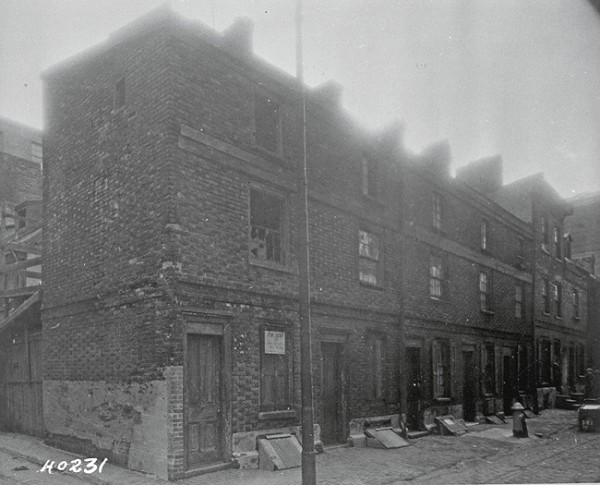
Corner of Hoffman’s Alley and Quarry Street, 1931. (Courtesy, City of Philadelphia, Historic Commission.) The plate was found in a privy behind the house on Hoffman’s Alley, just visible on the left behind the row of five tenements.
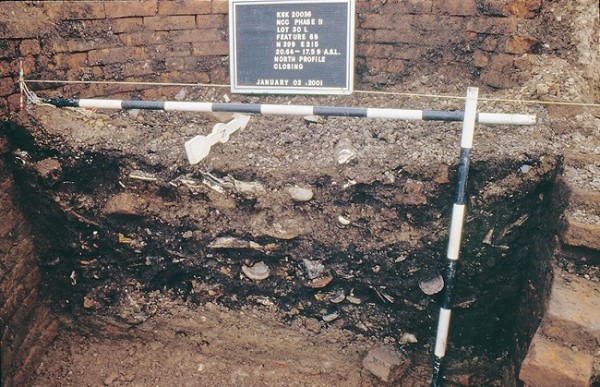
Profile view of the partially excavated privy from the National Constitution Center site that contained the plate. (Courtesy, National Park Service, Independence National Historical Park.) This photo shows multiple trash layers containing eighteenth-century ceramics, glass, and other household trash. The scale across the top of the deposit is five feet in length.
